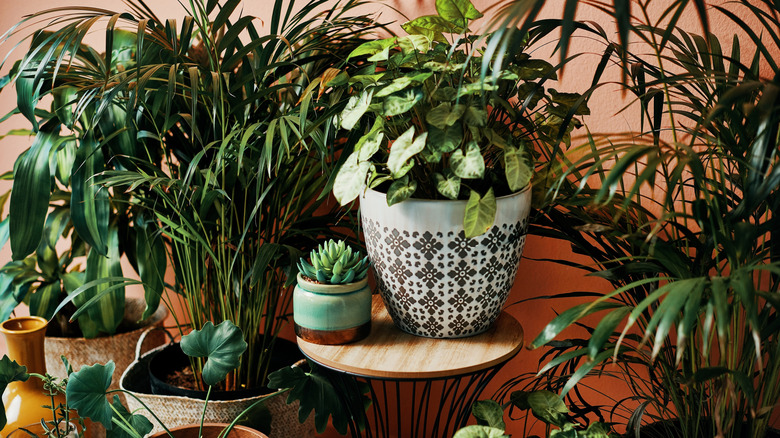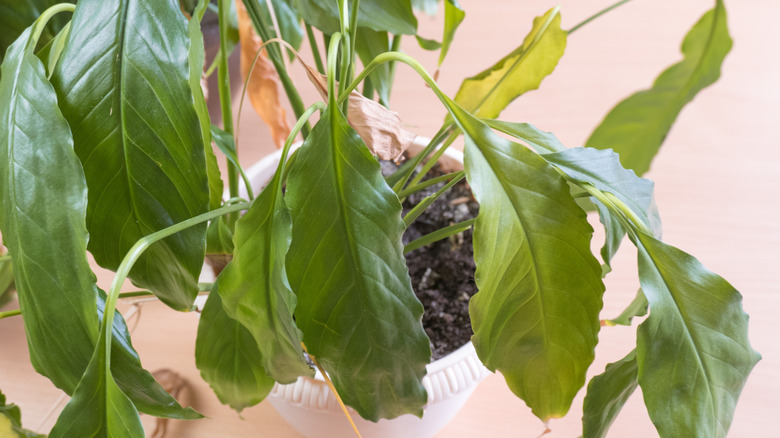Is It A Good Idea To Prune Houseplants In The Fall? Here's What We Found
Just like outdoor plants, houseplants require sunlight, water, and the right nutrients to thrive. While there are some high-maintenance house plants that you should avoid if you lead a busy life, houseplants typically don't require as much work because they aren't exposed to the elements. Therefore it's easier to control the conditions that they're in.
It might be surprising to learn then that houseplants are also affected by the changes in seasons. In particular, their needs can change as cool fall weather settles in, which is why it's generally not a good idea to heavily prune houseplants in the fall. You can do light pruning at any point during the year, but avoid heavy reshaping until the weather warms up.
Pruning is a crucial aspect of plant care. Not only does it help the plants maintain a shape and size that works well in an indoor space, but it also helps prevent pests, disease, and other issues that can affect their overall health. In addition, it helps improve airflow for the plants, which is especially important for houseplants since they don't have access to as much fresh air as outdoor plants.
Avoid major pruning of houseplants in the fall
There are many mistakes to avoid while pruning your plants, but pruning at the wrong time of year may be among the most significant. While houseplants aren't exposed to the same temperatures as outdoor plants, they can go dormant in the fall and winter just like their exterior counterparts. That's because dormancy can also be triggered by reduced sunlight and humidity, which occurs even inside our homes as the days become shorter and the weather becomes drier.
During dormant periods, a plant's growth slows or stops completely. Pruning while your houseplants are in this stage is a mistake because they usually don't have the energy necessary to recover. However, in spring, when the days are longer and the plants receive more sunlight, they enter an active growth phase that makes recovery easier. Additionally, if you do accidentally over prune your plants, they will likely experience new growth during this time that can help even out your overzealous pruning.
Keep your houseplants looking healthy with light fall pruning
If you want to prune your houseplants like the pros, it's important to know when pruning in the fall makes sense. While you don't want to do any substantial shaping or trimming of your houseplants, small pruning tasks can help keep your plants healthy even in periods of slow growth. As plants prepare for winter, they often begin shedding leaves. In some cases, though, the leaves don't fall off. If you notice yellow or brown leaves that appear dead, pruning them can help the plant build up energy reserves for winter, prevent the spread of disease, and promote a healthier overall appearance.
Additionally, if you notice that your houseplants have grown quickly over the summer and become "leggy," it's a good idea to prune even in fall. Leggy growth typically refers to long or tall sections of stem that don't have very many leaves. These stems typically look unhealthy and can ruin the shape of a plant. Just as with pruning dead, yellow leaves, removing these pieces of the plant can help it conserve energy for winter dormancy.


